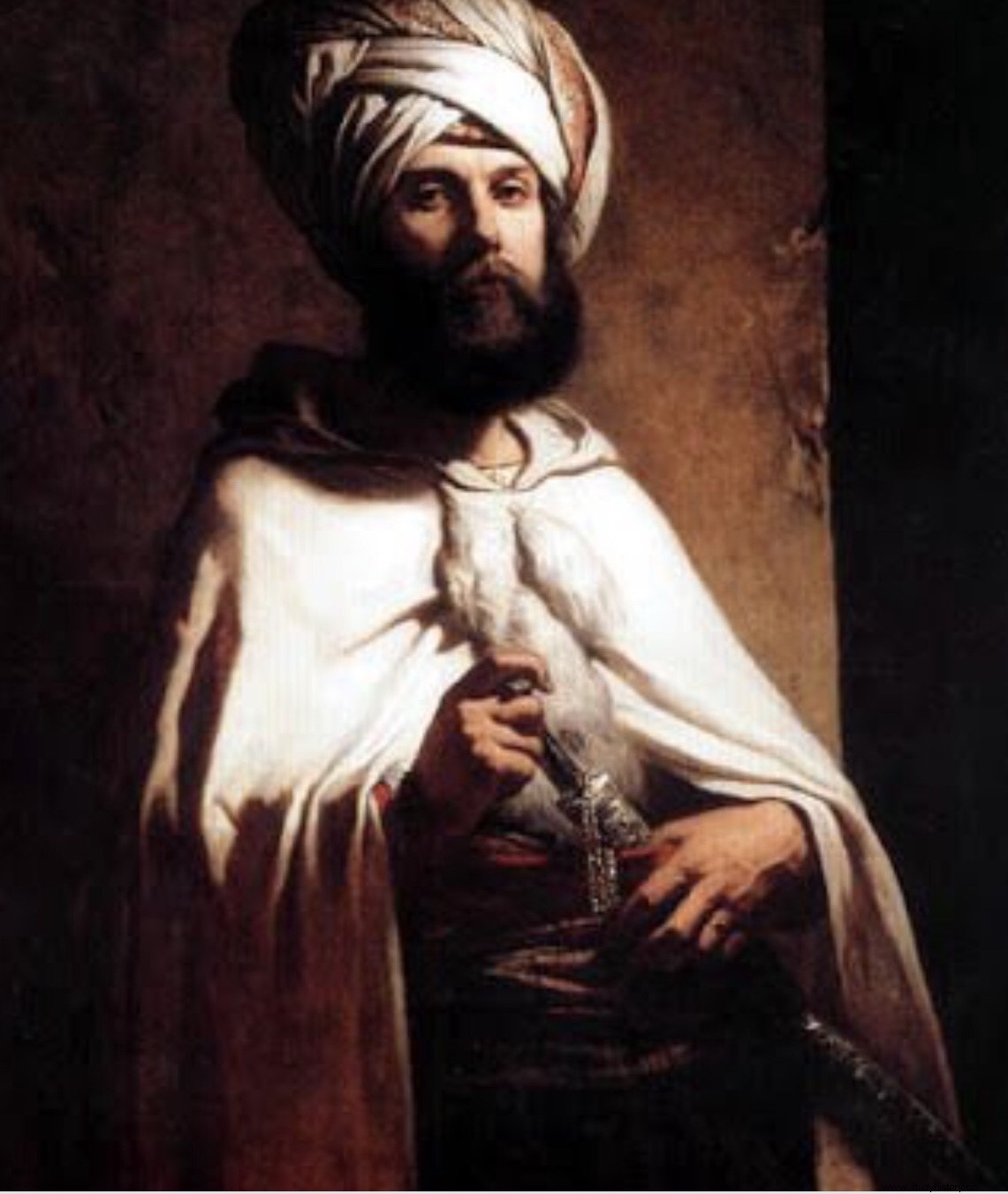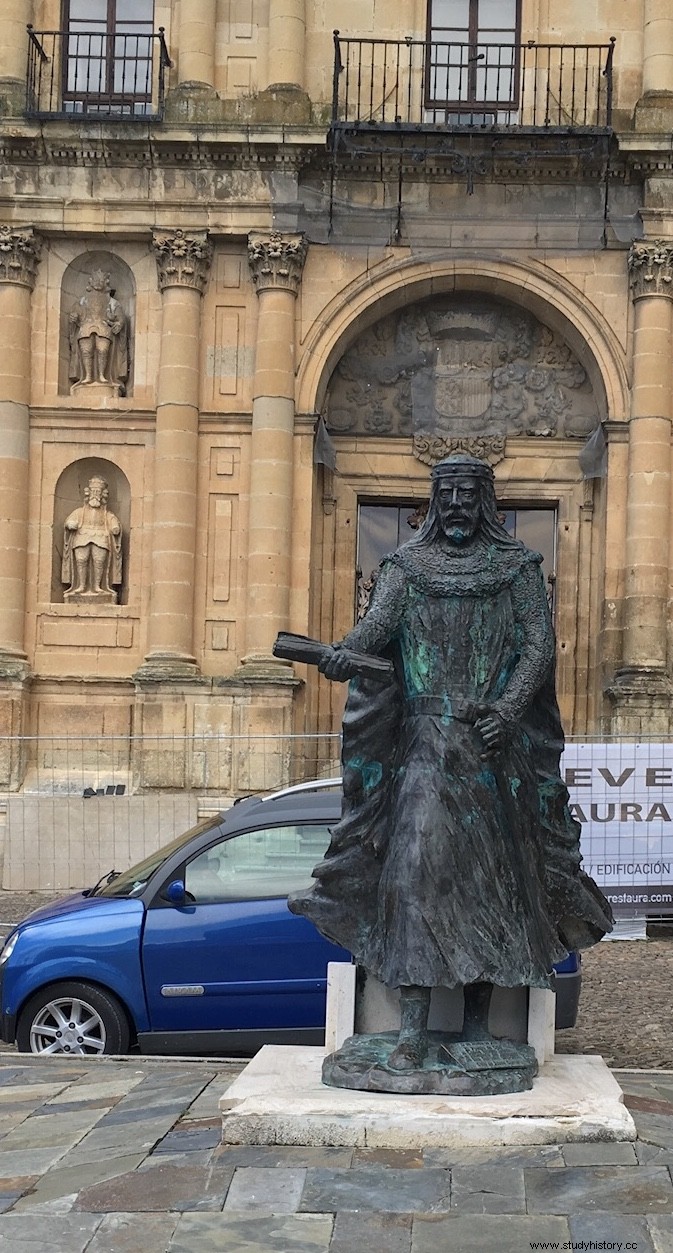The first entry of this series on the Caliphate of Córdoba ended with the defeat of Abderramán III against Ramiro II de León and his allies in the battle of Simancas, or more exactly in the Alhándega ravine, since the battle itself had no clear winner. .
One of the first consequences of what happened in Simancas was that the caliph decided that he had had enough of dealing with military affairs in person; he retired to Córdoba and from then on entrusted the carrying out of the campaigns to his generals (from then on he remained "calm on his throne, enjoying the ease of his reign and not fighting again until he died").
But this decision also had a decisive influence on much longer-term circumstances. To begin with, starting with Simancas, the caliphs delegated the leadership of the traditional oil companies against the Christian kingdoms to cadíes of his trust and professionalized their army with a greater role of mercenary troops. As a consequence, one of these warlords would become more powerful than the caliph he represented.
In addition, there was a change in the treatment with the Christian kingdoms that was going to prove very successful:the caliphate would try from then on to politically destabilize its rivals in the north. As Manzano Moreno expresses, «during the following decades the confrontations between Córdoba and the northern kingdoms changed their character:every summer there were skirmishes of greater or lesser importance led by cadíes Cortobeses or by the lineages established on the border, which after the defeat saw their dominance increase in the territories they controlled. In this way, the custom of sending annual olive oils covered in a large apparatus fell into disuse for a few decades. […] At the time that this border was established with greater clarity and the aceifas were a matter of victorious generals or border leaders who sent news of their resounding triumphs to Córdoba, the caliphs chose to intervene in the complex conflicts that devastated the Christian kingdoms. […] It was a very successful strategy. […] To say that during the second half of the 10th century the northern kingdoms became satellites of Córdoba is no exaggeration.”
Effectively, from then on the caliphate became the arbiter of the internal conflicts for power in the Christian kingdoms, supporting one or the other contenders and contributing decisively to the weakening of its peninsular rivals. The pretenders to the Christian thrones paraded through Córdoba practically begging for the support of the Caliphate.
This situation continued after the death of Abderramán III and until the coming to power in 978 of the great Cordovan leader Almanzor. In the blog entry dedicated to him we talk at length about his exploits and we refer to her. For the purposes that interest us now, we have to jump back in time and place ourselves in the symbolic year 1000.
That year Almanzor faced a new coalition between León, Castile and Pamplona in the battle of Cervera (in the Arlanza valley, in Burgos) that was very close to making him bite the dust. Only the military skill of the Muslim leader, together with a bit of luck, allowed him to reverse the result of a confrontation that ended in great mortality.
This battle revealed, as Manzano Moreno points out, that "perhaps as the result of a rejection of the conditions that came with submission, perhaps as a challenge against an enemy who could cause untold destruction, but possessed a much greater weakness." than it seemed, the fact is that these sovereigns remade their coalitions with the same speed with which the hayib ran his continuous campaigns. […] After long years of continuous battle, the military strength of the Christian territories continued to be intact, while the Andalusian machinery began to show certain symptoms of exhaustion».
The following months would witness the wrath of the hayib , which was especially suffered in the lands of Castile. According to Arab sources, Almanzor advanced from Clunia towards Salas de los Infantes, Pinilla de los Moros, Vizcaínos, Barbadillo, Monterrubio and Canales. He reached the monastery of San Millán de la Cogolla in La Rioja and set it on fire and razed it to the ground. There he suffered an attack of gout and was taken in a litter to Medinaceli, where he died in the year 1002.
Almanzor's death marked the beginning of the end of the Caliphate of Córdoba, although the process would take a few years to crystallize. From 1002 to 1008 the office of hayib It passed to Almanzor's son, Abd-el Malik, who continued the policy of formal submission to the caliph and the campaigns of his father. But not all campaigns of the new hayib they were successful and this caused the government of Almanzor's son to begin to be questioned in Córdoba; It was even criticized that he saturated the slave market with as many captives as he captured in his oilfields.
Despite this, Abd-el Malik continued with his campaigns and defeated an alliance of Leonese and Pamplonese in Clunia in 1006. and their former Castilian allies. In the year 1008, while carrying out a new campaign, he felt indisposed and died, curiously, also in Medinaceli like his father. This would be the moment when the buried cracks in the Andalusian Córdoba building began to surface and cracked its construction.
After Abd-el Malik's death, one of his brothers, named Abderramán Sanjul, tried to impose himself on him, whom many considered responsible for murdering his half-brother. This Sanjul was the son of Almanzor and the daughter given to him by the Pamplona king Sancho Garcés II, Abda, who was also the granddaughter of Fernán González.

Abderramán, or Sanchuelo as his mother called him, he quickly became unpopular when he managed to convince Caliph Hisham to appoint him as his successor (something neither his father nor his brother had dared to do). This not only broke with the dynastic succession that he ruled in Córdoba from the middle of the 8th century, but also with the norm that the caliph had to belong to the Umayyad family. The many members of this dynasty, grandchildren and great-grandchildren of Abderramán III, who remained in Córdoba decided to remedy this affront.
The population of Cordoba was willing to lend support to the rebellion, as it was subjected to enormous fiscal pressure and fed up with the rudeness and privileges of the growing number of Berber mercenaries hired by Almanzor.
Taking advantage of the fact that Sanchuelo had launched a campaign against Castile, the rebels deposed the weak Hisham and appointed a relative of his who was called al-Mahdi (the well-guided) as caliph. Sanchuelo rushed back to Córdoba, but was arrested and executed; his corpse was dragged through all the neighborhoods of the capital of the caliphate. Almanzor's palace and his children were razed to the ground and looted by the population of Córdoba, who also launched a campaign of attacks against the assets and families of the Berber soldiers.
Thus began a process of disintegration of power in the caliphate referred to in the title of this entry and which was known as fitna. It translates as civil war, although in Arabic it implies the concept of trial for sinners devised by God.
The Berbers reacted by proclaiming another member of the Umayyad family (Sulayman al-Mustain) caliph and began a confrontation against al-Mahdi's colorful popular army, made up of artisans, shopkeepers, butchers and even ex-convicts. After a year of civil war, the Berber forces of al-Mustain prevailed in 1009, supported by a Christian character they called Ibn Mama Duna al-Qumis, who latest research identifies as the head of the Beni Gómez family, Count García Gómez.

An example of the degree of disintegration of the caliphate that caused this process and the change in the balance of power in the Peninsula that it entailed can be found with what happened to the Count of Castile, Sancho García. In 1009, the Berbers of al-Mustain asked for his help in the war against Córdoba, a city in which Sancho was received and paraded with his troops in November of that year, something unthinkable under the mandate of Almanzor or Abd -the Malik. One hundred Castilian knights remained in Córdoba in support of al-Mustain.
For its part, al-Mahdi's side offered the gold and the Moor to Count Borrell of Barcelona for his support in the conflict. The presence of these Christian armies in the caliphate and their decisive role in the struggle for the caliphal throne showed how things had changed in such a short time in al-Andalus.
Al-Mahdi's supporters came to reinstate the caliph in 1010 and the war continued in the following years until 1031, even with the reappearance of Hisham II. The Berbers entered Córdoba in 1013 and launched a bloody campaign of destruction of the city and indiscriminate assassinations, including that of Hisham II himself. The withdrawal of the Berber warlords was bought not with money, but with land, which in time would become lords disassociated from the government of the caliphate.
In other places, such as Toledo or Zaragoza, the latent aristocratic families that had led multiple rebellions against Córdoba until the time of Abderramán III and that had been integrated into the caliphal machinery, took advantage of the circumstance to also disassociate themselves from the centralized domain of Córdoba, minting currency and appointing their own caliphs for their new kingdom or taifa.
In short, the fitna it ended up giving rise to more than twenty independent centers of government in al-Andalus, known as the Taifa kingdoms. It would not be, far from it, the last chapter of Muslim domination in the Peninsula... but that's another story.
This post is an excerpt from my new book De Covadonga a Tamarón, history of the Asturian monarchy from Pelayo to Bermudo III, whose manuscript is going to enter the reading report phase, the first step for it to become a reality.
Daniel Fernandez deLis. From Covadonga to Tamarón.
Eduardo Manzano Moreno. History of Spain-. Medieval Times, Volume 2 . Criticism. Editorial Marcial Pons. First edition. Madrid 2015.
Vicente Ángel Álvarez Palenzuela (Coord). History of Spain in the Middle Ages . Ariel. 1st edition, 7th printing. February 2017
Ricardo Chao Prieto. History of the kings of León. Rimpego editorial.
Monarchy and society in the kingdom of León from Alfonso III to Alfonso VII . Center for Studies and Research «San Isidoro». Leon 2007.
